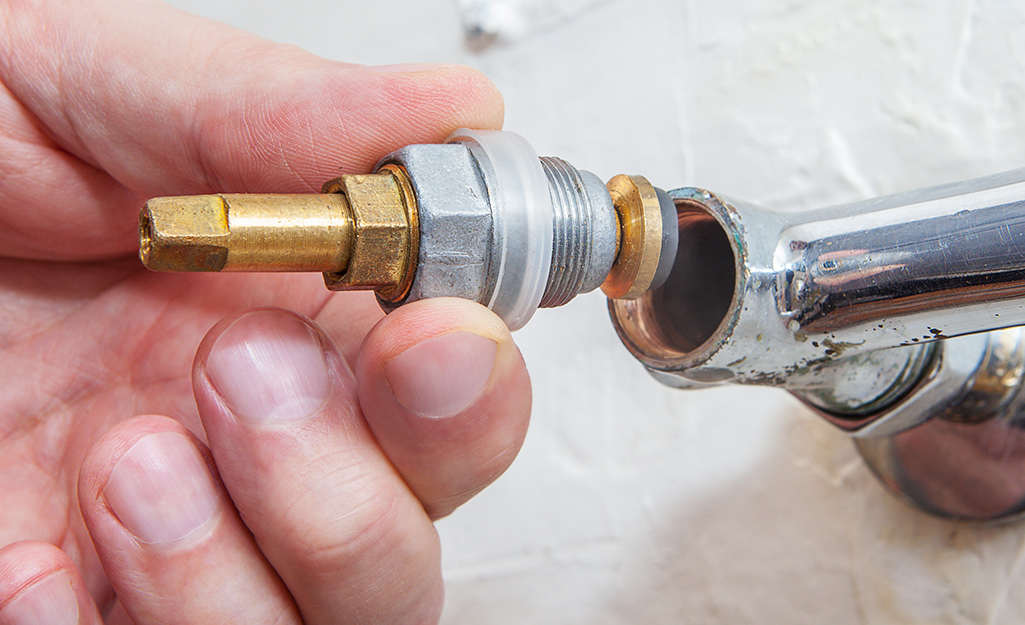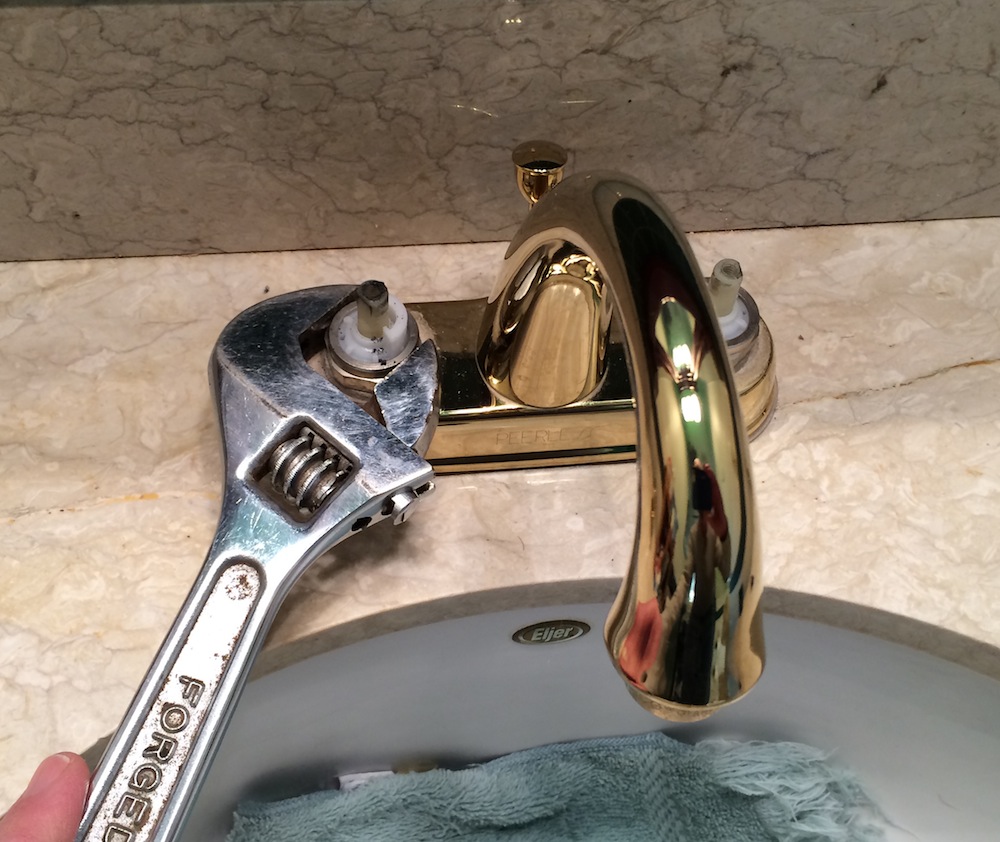How It's Needed to Fix a Dripping Faucet
How It's Needed to Fix a Dripping Faucet
Blog Article
The author is making several good annotation regarding Water Dripping from Faucet: Why and How to Fix overall in this post on the next paragraphs.

Leaking faucets might seem like a minor inconvenience, yet their influence surpasses simply the nuisance of the noise. From wasting water to incurring unnecessary economic prices and health and wellness risks, ignoring a trickling tap can cause different consequences. In this article, we'll look into why it's critical to resolve this typical household concern without delay and efficiently.
Wastage of Water
Ecological Effect
Dripping taps add considerably to water wastefulness. According to the Epa (EPA), a single tap leaking at one drip per secondly can lose greater than 3,000 gallons of water per year. This not only pressures water resources yet likewise affects ecosystems and wild animals dependent on them.
Step-by-Step Overview to Dealing With a Dripping Faucet
Devices Required
Before trying to repair a trickling faucet, collect the required tools, consisting of a flexible wrench, screwdrivers, replacement parts (such as washing machines or cartridges), and plumber's tape.
Typical Faucet Issues and Their Solutions
Recognize the kind of tap and the particular concern causing the drip. Usual issues consist of worn-out washers, rusty valve seats, or malfunctioning O-rings. Describe manufacturer directions or online tutorials for step-by-step advice on repair work.
Financial Prices
Increased Water Expenses
Past the environmental effect, trickling faucets can blow up water bills significantly. The accumulated waste with time translates into higher energy expenditures, which could have been prevented with prompt repairs.
Possible Home Damages
In addition, prolonged dripping can cause harm to components and surfaces surrounding the faucet. Water accumulation can trigger discoloration, deterioration, and even structural concerns if left neglected, causing added repair service expenses.
Health Problems
Mold and Mold Growth
The constant presence of wetness from a leaking tap develops an optimal setting for mold and mildew and mildew development. These fungis not just jeopardize indoor air high quality however likewise present health and wellness dangers, especially for individuals with respiratory system problems or allergic reactions.
Waterborne Conditions
Stationary water in leaking faucets can come to be a breeding place for microorganisms and various other microorganisms, boosting the danger of waterborne diseases. Contaminants such as Legionella bacteria thrive in stationary water, possibly causing severe diseases when consumed or breathed in.
DIY vs. Professional Fixing
Benefits and drawbacks of Do It Yourself Repair Work
While some may try to take care of a leaking faucet themselves, do it yourself repair work feature their very own set of obstacles. Without appropriate knowledge and devices, DIY attempts can aggravate the problem or lead to insufficient repair services, prolonging the trouble.
Advantages of Employing a Professional Plumber
Working with an expert plumber ensures that the underlying source of the leaking tap is dealt with effectively. Plumbing professionals possess the expertise and devices to diagnose and repair tap concerns effectively, conserving time and reducing the threat of further damages.
Environmental Obligation
Individual Payment to Preservation
Taking responsibility for taking care of trickling faucets straightens with broader efforts towards water conservation and environmental sustainability. Every person's activities collectively make a considerable impact on protecting priceless resources.
Sustainable Living Practices
By focusing on punctual repairs and embracing water-saving behaviors, individuals contribute to lasting living techniques that benefit both present and future generations.
Safety nets
Normal Maintenance Tips
To prevent dripping taps, perform routine maintenance such as cleansing aerators, inspecting for leaks, and replacing worn-out components without delay. In addition, think about mounting water-saving gadgets or updating to extra reliable fixtures.
Importance of Prompt Repair Works
Attending to leaking taps as quickly as they're observed protects against more water wastefulness and potential damages, inevitably conserving both water and cash over time.
Effect On Property Value
Assumption of Well-Maintained Property
Maintaining a home in good condition, including dealing with maintenance issues like dripping taps, improves its viewed value and desirability among possible customers or occupants.
Influence on Resale Value
Characteristics with well-kept plumbing fixtures, consisting of taps, command higher resale worths in the realty market. Attending to leaking faucets can add to a favorable impression throughout building examinations and settlements.
Conclusion
Resolving a leaking faucet exceeds plain ease; it's an important action towards conserving water, lowering economic costs, and safeguarding health and home. Whether with do it yourself repair services or professional aid, acting to fix trickling faucets is a tiny yet impactful method to advertise accountable stewardship of resources and add to a much healthier, much more lasting future.
How to Fix a Dripping or Leaky Faucet
A leaking faucet is one of the most common problems that homeowners encounter, but it being commonplace doesn’t make it any less annoying. The constant drip drip drip of a leaking bathtub faucet, showerhead, or sink tap can disturb your home’s serenity. Left neglected, a dripping faucet can also result in higher water bills and discoloration or mold growth in your sink or plumbing fixtures.
Fortunately, you don’t have to be a trained plumber to know how to stop a dripping faucet. With some basic tools, replacement parts, and a little patience, leaky faucet repair is a breeze. In this article, we’ll explain what causes dripping faucets and how you can fix them.
What Causes a Leaking Faucet?
Kitchen and bathroom faucets come in all manner of designs, but most involve some combination of valves, O-rings, seals, and washers. The O-ring is usually the weakest link, but any one of these pieces can wear down over time. Heat, moisture, temperature fluctuations, minerals, mold, and movement can contribute to warping and corrosion, breaking the watertight seal. This just comes with the territory of being a homeowner. Everything is always subject to wear and tear, and some component parts of your appliances and fixtures need to be replaced on occasion. At least replacement O-rings are cheap!
More rarely, dripping faucets can be a symptom of excessively high water pressure. Were this the case in your home, you would probably notice that the leak is not isolated to one faucet. Water pressure issues are harder to resolve on your own. We recommend contacting a professional plumber if you suspect your water pressure is too high.
How to Fix a Dripping Faucet
Pipe wrench or monkey wrench Allen wrench set Screwdrivers Old towel or rag Shut off the water.
Before you do anything, you need to turn off the water to keep from drenching your kitchen or bathroom. You should find a valve under the sink and against the wall. Once you’ve turned this valve, try turning the faucet on to confirm that the water source has been cut off.
If you can’t locate your local valve for the faucet you’re working on, you can always shut off the water to the house at the main valve. Of course, this will prohibit anyone from using the sinks, showers, or toilets while you’re working on the faucet that’s giving you trouble.
Plug or block the drain.
You’ll be disassembling the faucet and removing some small bits of hardware. Plug the drain with a stopper or rag to avoid the possibility of a small screw falling into your P-trap.
Take apart the faucet assembly.
There are several varieties of kitchen and bathroom faucets, each with its own manner of assembly. For detailed instructions on how to disassemble your faucet, you can refer to the fixture’s manual or contact the manufacturer. If you know whether you have a ball, disc, cartridge, or compression faucet, you can find detailed schematics online.
In general, you need to begin by removing the faucet handles. You might notice a small screw that you’ll need to remove with a screwdriver or Allen wrench. If you don’t see any visible securing hardware, it’s likely hidden under a decorative cap that can be unscrewed or popped off with flathead screwdriver.
Remove each piece methodically, consulting a schematic when necessary. Take notes or arrange the pieces in such a way to make it easier to correctly reassemble the faucet later.
Remove the cartridge.
Once you’ve removed the handles and securing hardware, you should be able to remove the valve cartridge or stem. Some cartridges will slide right out. Other faucet models will require you to loosen a nut with a pipe wrench before you can remove the valve stem.
Examine the exposed hardware.
With the cartridge or stem removed, inspect the component parts. Check the rubber O-rings for wear and tear. Also examine the seat washer for corrosion or other damage. These pieces are usually the responsible parties for a dripping faucet, but it’s worth inspecting the other component parts while you have the faucet disassembled.
Find replacement parts.
Once you’ve identified which faucet component has failed, find an identical replacement. Your local hardware store should have O-rings, seat washers, and other standard components in stock. If you have a luxury or uncommon faucet, you may have to contact the manufacturer for a replacement part.
It’s a good idea to take your old parts with you to the hardware store so you can compare them with the store’s inventory and be sure you’re purchasing the correct replacement.
Reassemble the faucet.
With your new parts in hand, reconstruct the faucet and handles. Don’t be tempted to overtighten screws or nuts. You might think this could create a better seal, but it can instead damage or bend a delicate part of the assembly and create a new problem for you.
Turn on the water and test the faucet.
The only thing left to do is test your work. Unplug the sink, turn the water back on, and try the faucet. Congratulate yourself on a job well done!
https://www.libertyhomeguard.com/how-to-fix-a-dripping-or-leaky-faucet/

Hopefully you liked our section on Why It's Important to Fix Leaky Faucets. Thanks so much for finding the time to read our posting. Sharing is caring. Helping others is fun. Bless you for being here. Kindly check our site back soon.
Report this page